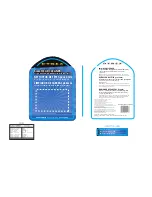
Glossary
GL-8
Cisco Unified Communications Manager Configuration Guide for the Cisco TelePresence System
OL-21851-01
SHA
Secure Hash Algorithm. A set of cryptographic hash functions designed by the National Security
Agency (NSA) and published by the NIST as a U.S. Federal Information Processing Standard. The
three SHA algorithms are structured differently and are distinguished as SHA-0, SHA-1, and SHA-2.
SIP
Session Initiation Protocol. Protocol designed to signal the setup of voice and multimedia calls over IP
networks.
SNMP
Simple Network Management Protocol. Network management protocol used almost exclusively in
TCP/IP networks as a means to monitor and control network devices, and to manage configurations,
statistics collection, performance, and security.
SOAP
Simple Object Access Protocol. XML-based protocol to let applications exchange information over
HTTP.
SSCD
System Status Collection Daemon. The daemon gathers statistics about the system it is running on and
stores this information. Those statistics can then be used to find current performance bottlenecks
(performance analysis, for example) and predict future system load (capacity planning, for example).
Sysop
System Operation (sysop) Logs. Sysop messages describe system activity. Some messages can help you
identify and resolve system operation problems. These messages are available to the user.
Syslog
System Logs (syslog). Debugging logs that are collected from your system and used by Cisco technical
response to diagnose and resolve issues. These messages are not ordinarily seen by the user.
T
trap
An SNMP trap is a message which is initiated by a network element and sent to the network
management system. See
MIBs, RFCs, and SNMP Trap Messages for the Cisco TelePresence System
.
triple system
A Cisco TelePresence (CTS) 3000 or CTS 3200 system featuring three displays.
TFTP
Trivial File Transfer Protocol. Simplified version of FTP that allows files to be transferred from one
computer to another over a network, usually without the use of client authentication (for example,
username and password).
U
UDI
Unique device identification.
V
VGA
A graphical standard supported by PC graphics hardware that serves as a base onto which
device-specific drivers are loaded into the computer.
virtual machine
A virtual machine (VM) is a software implementation of a machine (a computer, for example) that
executes programs like a physical machine does. A system virtual machine provides a complete system
platform which supports the execution of a complete operating system (OS).













































